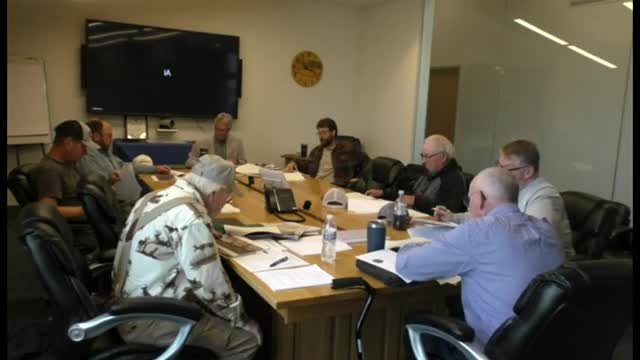Emerald ash borer threatens northern forests and ecosystems
September 25, 2024 | Koochiching, Minnesota
This article was created by AI summarizing key points discussed. AI makes mistakes, so for full details and context, please refer to the video of the full meeting. Please report any errors so we can fix them. Report an error »

In a recent government meeting, officials discussed the pressing concerns surrounding the black ash swale forests, which are at risk from the invasive emerald ash borer. This pest, already wreaking havoc across the United States, threatens to decimate black ash trees, the primary species in these saturated forest areas. The loss of black ash could lead to significant ecological changes, including altered hydrology and the potential transformation of these forests into unproductive land.
The meeting highlighted that black ash trees play a crucial role in water management, with each tree capable of transpiring approximately 100 gallons of water daily. The anticipated decline in ash populations could raise the water table, further impacting the surrounding ecosystems. Participants expressed urgency in addressing the potential arrival of the emerald ash borer, noting that it could already be in nearby regions, with concerns about the transportation of infested firewood exacerbating the threat.
In addition to the ash borer issue, the meeting covered the health of the region's forests, with data indicating that overall growth is currently outpacing removals. This positive trend is attributed to effective management practices, although challenges remain due to environmental factors like flooding and drought. The discussion also touched on the importance of maintaining diverse forest types, including fire-dependent species like jack pine, which require periodic fires for regeneration.
Stakeholders emphasized the need for collaborative management strategies that consider the ecological balance, including the needs of wildlife such as deer and wolves. The meeting concluded with a focus on the importance of protecting the region's forests, with 91% of forested areas classified as protected under various conservation programs. However, concerns about declining regional populations and increasing absentee land ownership were raised, highlighting the complexities of forest management in the area.
Overall, the meeting underscored the critical intersection of ecological health, economic viability, and community involvement in the stewardship of the region's forests.
The meeting highlighted that black ash trees play a crucial role in water management, with each tree capable of transpiring approximately 100 gallons of water daily. The anticipated decline in ash populations could raise the water table, further impacting the surrounding ecosystems. Participants expressed urgency in addressing the potential arrival of the emerald ash borer, noting that it could already be in nearby regions, with concerns about the transportation of infested firewood exacerbating the threat.
In addition to the ash borer issue, the meeting covered the health of the region's forests, with data indicating that overall growth is currently outpacing removals. This positive trend is attributed to effective management practices, although challenges remain due to environmental factors like flooding and drought. The discussion also touched on the importance of maintaining diverse forest types, including fire-dependent species like jack pine, which require periodic fires for regeneration.
Stakeholders emphasized the need for collaborative management strategies that consider the ecological balance, including the needs of wildlife such as deer and wolves. The meeting concluded with a focus on the importance of protecting the region's forests, with 91% of forested areas classified as protected under various conservation programs. However, concerns about declining regional populations and increasing absentee land ownership were raised, highlighting the complexities of forest management in the area.
Overall, the meeting underscored the critical intersection of ecological health, economic viability, and community involvement in the stewardship of the region's forests.
View full meeting
This article is based on a recent meeting—watch the full video and explore the complete transcript for deeper insights into the discussion.
View full meeting
